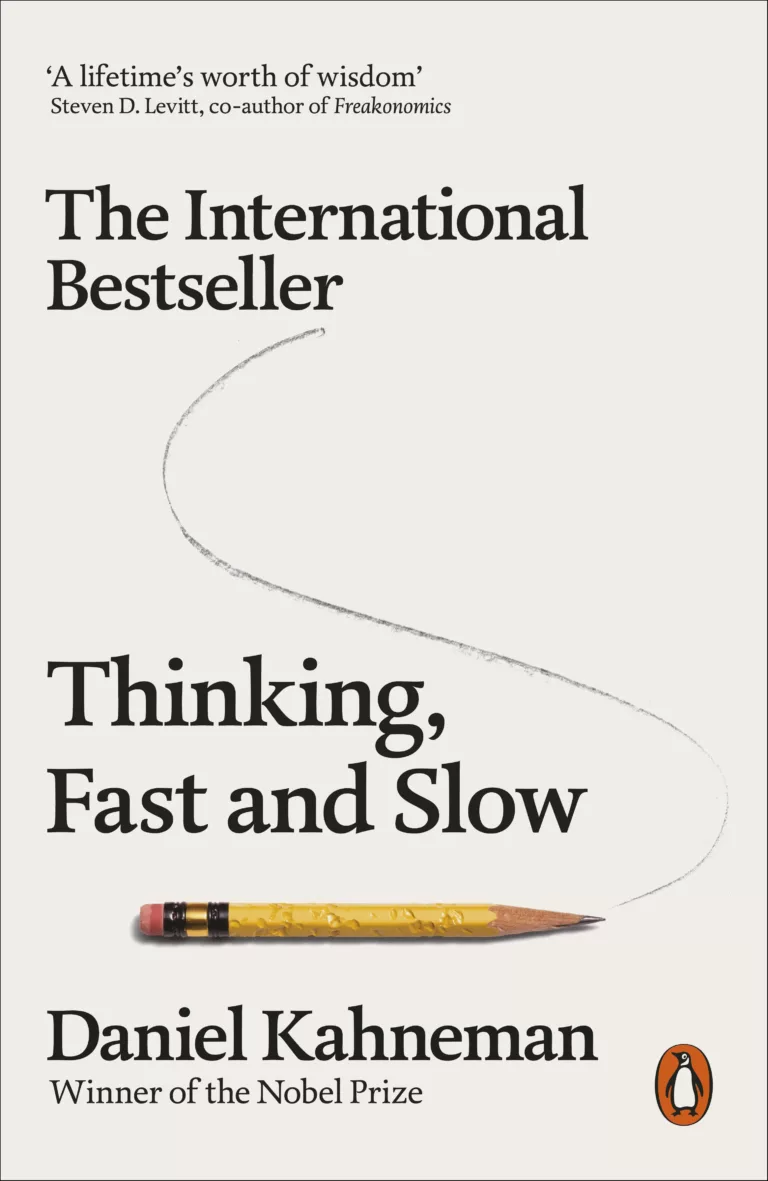
Titre : Thinking, Fast and Slow
Titre Français : Système 1 / Système 2 : Les deux vitesses de la pensée
Auteur : Daniel Kahneman
Éditeur : Penguin Books
Pages : 504
Année : 2011
ISBN : 978-0-141-03357-0
Comment prenons-nous nos décisions ? Qu’est-ce qui guide nos préférences et nos jugements ? Quand faut-il faire confiance à notre intuition ? Tels sont les fils rouges de cet ouvrage, dans lequel Daniel Kahneman nous emmène à la rencontre étonnante des deux « personnages » qui se partagent notre esprit. Le « Système 1 » est rapide, intuitif et émotionnel ; le « Système 2 » est lent, réfléchi et logique. Via de multiples expériences auxquelles le lecteur est invité à s’essayer lui-même, Daniel Kahneman expose les ravages des partis…
Daniel Kahneman est un psychologue et économiste Américano-Israélien. Il a reçu le prix Nobel d’économie en 2002 pour ses travaux sur la théorie des perspectives.
INTRODUCTION.
PART I. TWO SYSTEMS
PART II. HERISTICS AND BIAIS
PART III. OVERCONFIDENCE
PART IV. CHOICES
PART V. TWO SELVES
CONCLUSION.
Thinking, Fast and Slow est un ouvrage remarquable sur les mécanismes cognitifs qui influencent nos décisions et nos comportements. Daniel Kahneman nous présente deux protagonistes, le système I, intuitif et immédiat et le système II, lent et réflectif, qui vont nous accompagner tout au long de l’ouvrage, qui n’est pas à proprement parlé un récit, mais plutôt un enchaînement d’études et d’expériences mettant en lumières nos différents biais cognitifs et l’impact sur nos décisions et jugements.
Les très nombreuses expériences décrites et les nombreux exemples facilitent la compréhension de l’ouvrage.
Pour revenir sur les deux systèmes de pensée :
Le système I : rapide, intuitif et spontané, émotionnel, incontrôlable, plaisant, néglige l’ambiguïté, nécessaire à notre survie mais très largement défaillant, et
le système II : lent, système de contrôle, logique, efficace, fort consommateur de ressource, nécessite de la concentration, un effort conscient
WYSIATI : what you see is all there is, est un concept qui revient régulièrement dans l’ouvrage et est responsable de nombreux biais : excès de confiance, biais d’exposition, etc… Nous avons tendance à ne considérer que ce que nous voyons ou connaissons.
Une liste impressionnante de biais auxquels nous sommes sensibles: aversion au risque, effet de halo, l’ancrage (ah, les étiquettes à 9,99€)… et bien d’autres.
Mais alors, est-il possible de maitriser certains de ces biais cognitifs, maintenant que nous les connaissons? Il s’avère que contrôler ses propres biais cognitifs, même pour une personne aussi bien informée que Kahneman, reste une épreuve extrêmement complexe. L’organisation semble mieux préparée à contrecarrer des erreurs de jugements au travers de processus et d’une culture adaptée (à relier aux politiques de cybersécurité dans les entreprises).
Je ne peux que vous recommander la lecture de ce livre dont les notions abordées sont accessibles et aident à comprendre nos fragilités humaines pouvant impacter (c’est peu dire) la qualité de notre jugement et de nos décisions dans notre vie quotidienne. Dans mon top 3 des livres lus en 2023 !
En achetant sur fnac ou Leslibraires via ces liens, vous soutenez mon travail sur le blog (versement d’une petite commission) sans rien changer au prix final du livre 🙏🏻. Sur leslibraires.fr, vous soutenez en plus votre librairie de quartier !